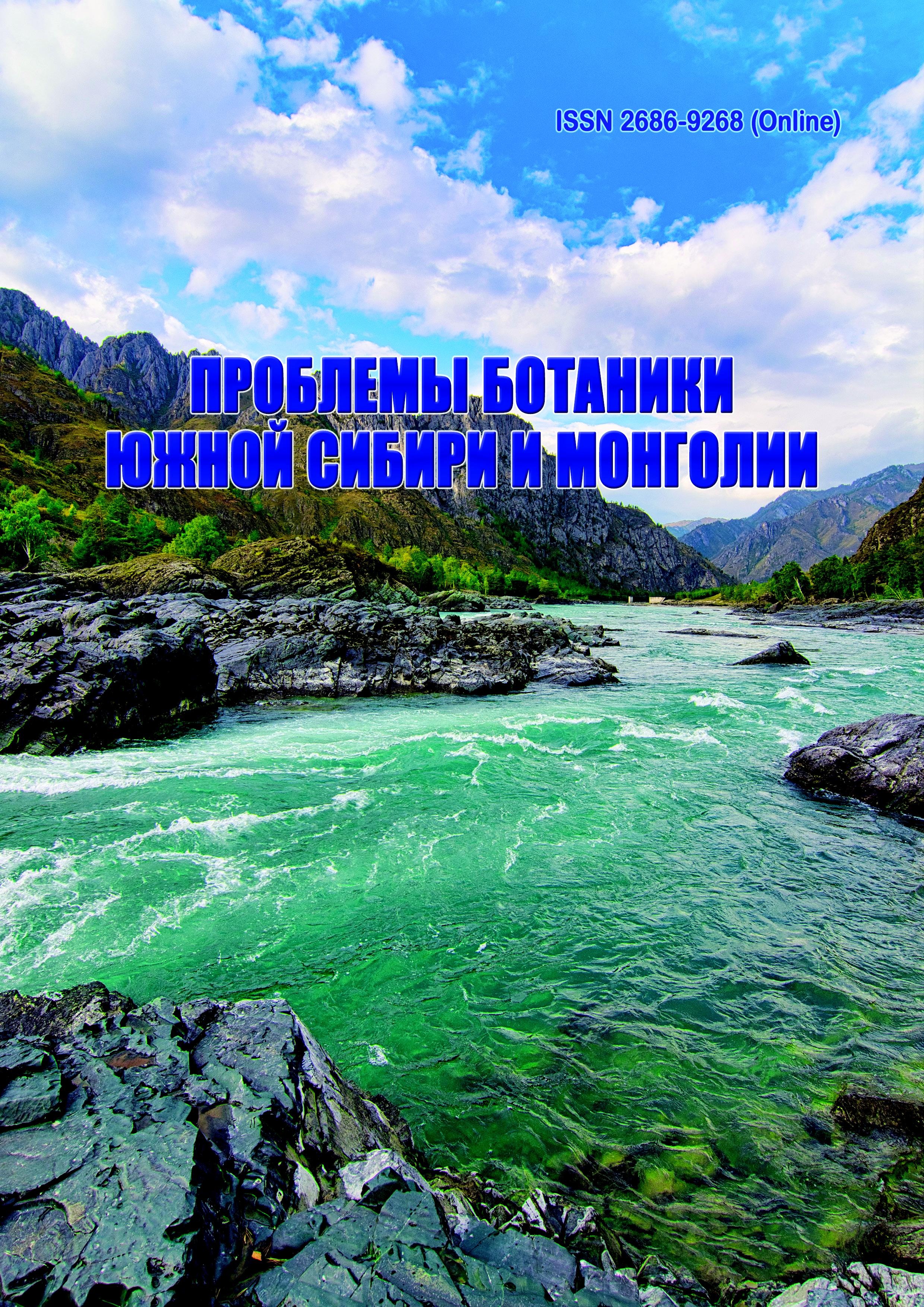Dynamics of aboveground phytomass in the communities of the Ob River forest-steppe and Northern Kulunda during protective regime
УДК 581.55:58.084.2+633.2.03
Abstract
The formation of the herbage of plant communities depends on the natural and climatic features of the area and the modes of their economic use. In 2013-2021, the comparison of dynamics of aboveground phytomass in steppe and meadow communities of Western Siberia at an absolute protective regime was carried out. The state of vegetation was studied on the territory of the Novosibirsk region on the example of two communities of the steppe meadow (the right-bank part of the Ob River forest-steppe) and two communities of the solonetzic steppe (the northern part of the Kulunda steppe). The vegetation cover was described according to the standard geobotanical techniques. It is shown that at an absolute protective regime of meadow communities, along with weather conditions, the considerable impact on the condition of the herbage is significantly affected by the excessive accumulation of plant litter, which reaches up to 57-77 % of the total aboveground phytomass. This leads to decrease in the density and mass of green shoots, while the overgrowth of weed plant species is often observed. The meteorological conditions of separate years have the main impact on formation of the aboveground phytomass of solonetzic steppes. Both in dry and highly humid years, the participation of grasses in the herbage decreases and the role of salt-tolerant forbs, as well as sagebrushs and especially Halimione verrucifera, increases.
Downloads
Metrics
References
Базилевич Н. И. Биологическая продуктивность экосистем Северной Евразии. - М.: Наука, 1993. - 293 с.
Базилевич Н. И., Титлянова А. А. Особенности функционирования травяных экосистем в сравнении с лесными и пустынными // Математическое моделирование в экологии. - М.: Наука, 1978. - С. 65-100.
Горшкова А. А., Монгуш Л. Т. Степные пастбища Центральной Тувы (Улуг-Хемская котловина). - Кызыл: Ту-винск. кн. изд-во, 1992. - 109 с.
Зверева Г. К. Влияние длительного заповедования на растительность деградированных пастбищных фитоценозов Приобской лесостепи // Ученые записки ЗабГУ сер. «Естественные науки», 2014. - № 1(54). - C. 44-52.
Конспект флоры Азиатской России: Сосудистые растения. - Новосибирск: Изд-во СО РАН, 2012. - 640 с.
Курбатская С. С. Изменение структуры и запаса растительного вещества на мониторинговых участках степных экосистем // Новые исследования Тувы, 2009. - № 4. - С. 209-224.
Макаревич В. Н., Джалилова А. О., Игнатенко И. В., Кириллова В. П., Скалон И. С. Экспериментальное изучение реакции лугового сообщества на различные формы воздействия (важнейшие итоги) // Проблемы ботаники, 1968. - Т. 10. - С. 193-213.
Назаренко О. Г., Кумачева В. Д. Динамика продуктивности надземной зеленой массы экосистем с различным уровнем антропогенной нагрузки // Юг России: экология, развитие, 2008. - № 1. - С. 113-118.
Семенова-Тян-Шанская А.М. Накопление и роль подстилки в травяных сообществах. - Л.: Наука, 1977. - 191 с.
Собакинских В. Д. Динамика максимального запаса надземной фитомассы луговой степи при разных режимах заповедования в Центрально-Черноземном биосферном заповеднике // Динамика биоты в экосистемах Центральной лесостепи. - М.: АН СССР, 1986. - С. 106-113.
Собакинских В. Д. Динамика надземной фитомассы луговой степи в Центрально-Черноземном заповеднике // Труды Центрально-Черноземного государственного заповедника, 1997. - Вып. 15. - С. 65-73.
Титлянова А. А., Миронычева-Токарева Н. П., Романова И. П., Косых Н. П., Кыргыс Ч. О., Самбуу А. Д. Продуктивность степей // Степи Центральной Азии. - Новосибирск: Изд-во СО РАН, 2002. - С. 95-173.
Csergo A.M., Demeter L., Turkington R. Declining diversity in abandoned grasslands of the Carpathian Mountains: do dominant species matter? // PLoS One, 2013. - Vol. 8, iss. 8. - e73533.
Losvik M. H. Plant species diversity in an old, traditionally managed hay meadow compared to abandoned hay meadows in southwest Norway // Nordic Journal of Botany, 1999. - Vol. 19. - P. 473-487.
Jernej I., Bohner A., Walcher R., Hussain R. I., Arnberger A., Zaller J. G., Frank T. Impact of land-use change in mountain semi-dry meadows on plants, litter decomposition and earthworms // Web Ecology, 2019. - Vol. 19. - P. 53-63.
Wahlman H., Milberg P. Management of semi-natural grassland vegetation: evaluation of a long-term experiment in southern Sweden // Annales Botanici Fennici, 2002. - Vol. 39. - С. 159-166.



